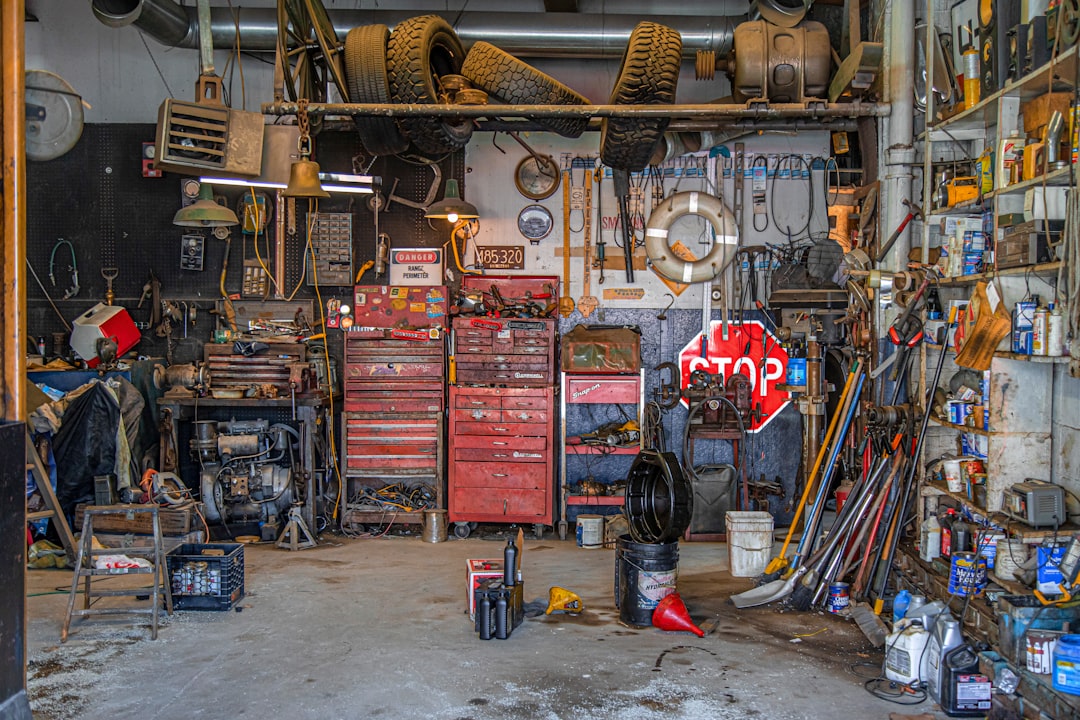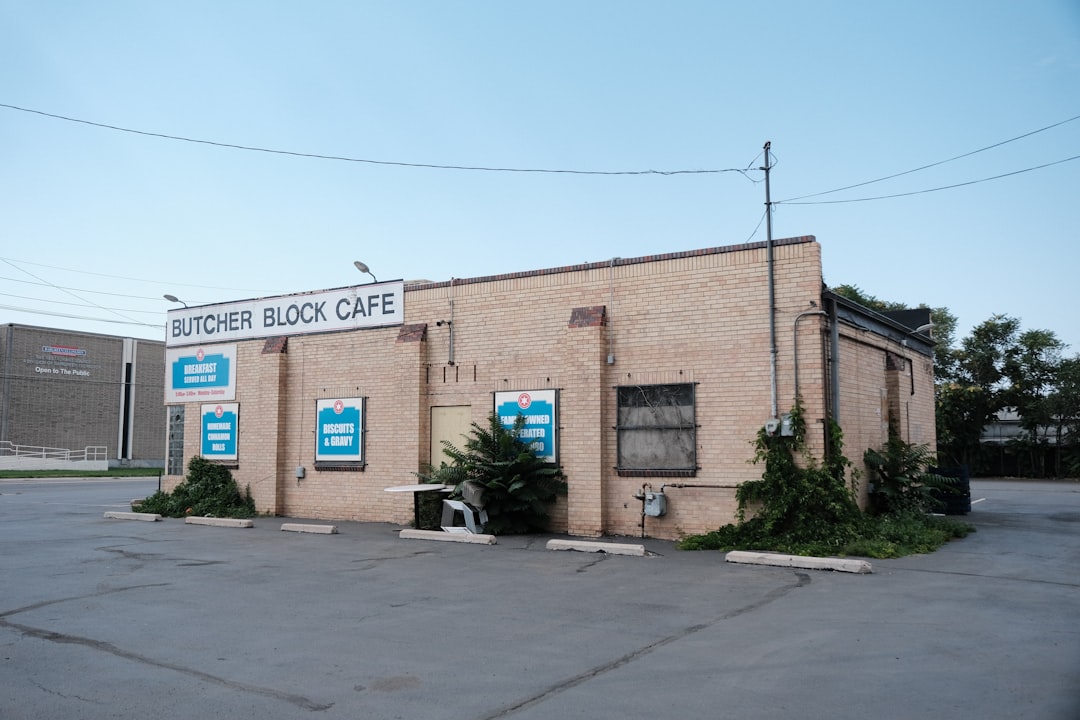

Engage prospects with a scan and streamline customer engagement with FREE QR code marketing tools by Sona – no strings attached!
Create a Free QR CodeFree consultation

No commitment

Engage prospects with a scan and streamline customer engagement with FREE QR code marketing tools by Sona – no strings attached!
Create a Free QR CodeFree consultation

No commitment
QR codes have become essential tools for diesel repair shops to connect physical touchpoints with digital experiences. Many shops struggle to capture and follow up with high-value customer prospects who interact with physical assets such as brochures, invoices, and signage, but never complete online forms or phone calls. This creates missed opportunities, incomplete data, and a disconnect between offline engagement and digital follow-up. QR codes offer a powerful way to streamline customer interactions, drive more heavy-duty truck repair appointments, and foster deeper loyalty without complex technical setups.
With competition higher than ever among diesel repair shops, bridging offline engagement with online action directly affects customer retention and new business acquisition. Leads often go untracked and review requests are lost to paper, while actions taken in the shop are not always visible in the CRM. QR code marketing helps shops turn these challenges into opportunities by enabling instant service bookings, automating communications, gathering actionable customer feedback, and tracking every scan for key insights.
This guide explores how QR codes can be integrated into diesel repair shops’ daily operations and marketing strategies to maximize visibility, elevate truck repair services, and deliver a digital-first customer experience that meets modern expectations while addressing gaps in today’s customer journey.

Diesel repair shops often face the reality of missed high-value connections when prospects review printed materials or visit waiting rooms but disappear before booking. Manual forms and feedback cards often result in lost or incomplete information, which makes it tough to nurture genuine interest and translate that interest into paid service appointments.
QR codes serve as a frictionless bridge between your shop’s offline materials and online interactions, making it easier to improve customer engagement, increase diesel truck maintenance appointments, and streamline key processes. By placing scannable codes on the right assets and mapping scans to automated actions, your team can capture demand at the source and follow up in real time.
Purpose-built tools now automate journey mapping and audience tracking for each QR scan, transforming missed or anonymous visitors into actionable leads you can segment and nurture in your CRM. Platforms like Sona QR allow you to manage dynamic destinations, enrich contacts automatically, and maintain continuity from scan to appointment to review.

Diesel repair shops often lack visibility into who visits or consumes print materials, which leads to missed opportunities and untracked journeys. Many potential customers review offerings or service reminders without ever submitting their details, so only a fraction of true demand is visible in your CRM or marketing dashboards. When you cannot see intent signals, it becomes difficult to assign staff, stock parts, or run targeted promotions.
QR codes solve these visibility gaps by turning attention into action. A scan can trigger a booking flow, a quote request, or a maintenance reminder sign-up, and it can attach those actions to a customer profile you can nurture over time. As shop leaders focus on utilization and throughput, QR codes help you capture more high-intent moments with less manual work.
By harnessing these capabilities, diesel repair shops can convert what would be lost touchpoints into measurable opportunities for conversion and retention. The result is a connected experience that surfaces demand earlier, reduces no-shows, and creates more moments to upsell or cross-sell relevant services.

A major pain point for diesel repair shops is reaching the right audience at the right time while controlling the cost and complexity of digital campaigns. Standardized email blasts and generic ads miss personalization cues, especially when customer records are incomplete or outdated. QR codes that match the context of the interaction deliver better intent capture and tighter follow-up.
Different QR code formats can be deployed based on the action you want customers to take. When paired with a clear call to action and a mobile-optimized destination, each format can eliminate friction and generate measurable results for your shop.
Dynamic QR codes, managed centrally, allow shop managers to update promotions or service URLs, prevent the loss of value due to outdated offers, and support smarter segmentation. With a platform like Sona QR, you can generate all formats, change destinations on the fly, and consolidate analytics in one dashboard.

Diesel repair shops often underutilize physical assets like waiting rooms, invoices, and signage, which means they miss chances to generate follow-ups, review requests, or repeat business. These gaps can result in lower retention, preventable churn, and missed upsell opportunities when customers leave without a clear next step.
Smart QR placements create interactive touchpoints across the customer journey. By mapping placements to intent, you make it easy for drivers, fleet managers, and owner-operators to take the next action that is right for them, whether that is booking, learning, or leaving feedback.
Strategically placed codes create trackable interactions while providing efficiencies that allow staff to focus on high-touch service. With consistent calls to action and UTM tagging, you can identify which placements drive revenue and which need creative or location adjustments.

Shops often struggle to collect timely feedback, remind customers of upcoming services, or capture interest before it fades. QR codes integrated at critical touchpoints convert fleeting attention into logged actions your team can act on, which reduces leakage in the funnel from awareness to booking.
Choose use cases that map to your most common customer interactions. Focus on reducing friction in moments when the driver or fleet manager already has your paper asset in hand or is standing near a relevant sign.
These solutions bridge the data and engagement gap so every interaction becomes an opportunity for continued relationship building and upsell or cross-sell efforts. Over time, QR-enabled workflows can lift review volume, increase repeat visit frequency, and improve service bay utilization.
Traditional advertising and digital retargeting campaigns struggle with incomplete or outdated account information, which causes ad spend to miss ideal audiences. High-value retargeting requires granular behavioral data and current profiles that reflect real-world actions taken by drivers and fleet managers.
QR code campaigns produce clean signals that segment your audience automatically. By assigning unique codes to specific placements and intents, you can distinguish between prospects, returning customers, and fleet coordinators and personalize your messaging based on what they scanned and when they scanned it.
Modern QR platforms unify scan events with marketing systems so diesel repair shops can focus on those most likely to convert. With Sona QR, each code becomes a smart entry point that tags intent and feeds downstream workflows immediately.
Lack of channel integration often creates gaps in diesel repair shop marketing, with valuable customer signals untracked and opportunity wasted. QR codes unify your strategy by creating bridges between offline and digital channels, making it easier to attribute results and deliver consistent experiences.
When you use QR codes as connectors, every poster, mailer, or invoice can drive real-time engagement and richer data collection. You will know which media drive the most scans, which audiences engage most often, and how those interactions influence bookings and repeat visits.
QR codes serve as the offline onramp to your digital marketing engine. With a centralized platform like Sona QR, you can manage all your codes, monitor performance across channels, and sync scan data with your CRM and ad platforms for closed-loop reporting.
Launching a QR campaign in a diesel repair environment requires clarity on goals, thoughtful placement, and a strong measurement plan. The following steps help you go from idea to execution with confidence while avoiding common pitfalls like unclear calls to action or low-contrast printing.
Before you begin, define the customer moment you want to improve. For example, do you want more booked appointments from estimates, higher review volume at checkout, or faster fleet scheduling for multi-vehicle accounts. Align your scanning experience with that moment and ensure the destination delivers exactly what the customer expects.
Diesel repair shops often struggle to connect offline customer engagement with measurable business outcomes. Transactions from brochures or walk-ins may go untracked, making it difficult to optimize spend or strategy and masking the true performance of your print and in-shop media. Without clean attribution, you risk over-investing in low-impact assets while underfunding high-performing ones.
Robust tracking and analytics enabled by QR code campaigns provide a direct line from scan to revenue. When every code is tagged, your team can attribute bookings, review submissions, and revenue to specific placements. This supports smarter staffing, more accurate inventory planning, and targeted promotions that reflect real demand.
This approach allows shops to act on real customer behavior, transforming offline actions into ROI-positive opportunities. Sona QR captures real-world engagement while Sona.com turns that engagement into insights you can act on, so QR codes become part of a measurable performance strategy.
Many shops deploy QR codes but miss chances to round out the customer view due to generic deployment and lack of integration. To maximize benefits, treat every QR as a campaign asset with a clear objective, a purpose-built destination, and a measurement plan that informs your next move.
Focus on tactics that match common diesel repair media while supporting a clear buyer journey. Small tweaks, like better contrast or a more specific CTA, can have large effects on scan rates and downstream conversion.
Creative example: Equip fleet partners’ trucks with small QR decals inside the cab for instant emergency scheduling or support access, which directs to a priority line for fleet accounts. Another idea: print QR codes on loyalty key tags that let drivers check maintenance history and claim seasonal discounts with one scan.
QR codes are transforming how diesel repair shops engage prospects and customers, turning every physical asset into a fully traceable entry point. This addresses industry pain points like anonymous traffic and missed follow-ups while delivering more control over the customer journey from first interest to repeat service.
Here is what well-executed QR programs deliver for diesel repair teams:
By incorporating QR codes into daily workflows, shops shift from reactive to proactive engagement at every touchpoint. Diesel repair shops that integrate well-designed QR code campaigns into their marketing and operations gain a competitive edge by making every customer interaction more dynamic, traceable, and actionable. Pain points like lost leads, anonymous offline engagement, and outdated targeting can be addressed with data-driven strategies and responsive assets. With the right approach, QR codes transform routine touchpoints into high-converting digital experiences, delivering measurable gains in appointments, customer satisfaction, and revenue. Start creating QR codes for free.
QR codes have revolutionized diesel repair shops by transforming traditional service touchpoints into dynamic, measurable opportunities for growth. From streamlining service check-ins to providing instant access to maintenance histories, QR codes enhance customer acquisition, improve service transparency, and elevate the overall client experience. Imagine customers effortlessly scanning a code to schedule repairs or review diagnostics in real time—saving time and building trust.
With Sona QR, diesel repair shops can create dynamic, trackable QR codes in seconds, update information instantly without costly reprints, and connect every scan directly to actionable insights and revenue. This technology empowers your shop to capture valuable data, optimize service workflows, and engage customers more effectively than ever.
Start for free with Sona QR today and turn every scan into a faster repair, a satisfied customer, and a stronger bottom line.
QR codes help diesel repair shops connect offline materials to digital actions, capture high-value leads, automate bookings and feedback, and provide actionable tracking to improve customer engagement and retention.
By placing QR codes on print materials like brochures, invoices, and signage that link to booking forms, service guides, and review portals, shops can drive online engagement, gather customer data, and automate follow-ups.
Effective placements include service receipts, waiting room posters, window decals, point-of-sale signage, invoices, and fleet partnership materials where customer intent is naturally high.
Useful QR code formats include web links for bookings, vCards for contact saving, SMS or email prefilled messages for inquiries, Wi-Fi access in waiting areas, and app download links for loyalty or fleet tracking apps.
QR codes provide detailed scan data such as location, time, and device, which can be linked to bookings and reviews to attribute revenue, optimize staff allocation, and improve targeted promotions.
Strategies include linking QR codes to interactive pricing guides, automated maintenance reminders, instant review capture, multi-channel integration with print and digital media, and unique codes for retargeting segments.
By assigning unique QR codes to different customer journey stages and tagging scan behaviors, shops can segment audiences, sync data with CRM and ad platforms, and personalize marketing based on real-time engagement.
They should define the business goal and use case, select the appropriate QR code type, design and test the code for scannability, deploy it across high-impact channels, and track and optimize performance using analytics.
QR codes reduce friction by providing one-scan access to booking, payment, reviews, and maintenance reminders, making print materials interactive and enabling real-time follow-up.
While the article does not list specific shops, using QR codes and online reviews linked from trusted diesel repair shops’ materials can help identify reputable shops in your area.
Use Sona QR's trackable codes to improve customer acquisition and engagement today.
Create Your FREE Trackable QR Code in SecondsJoin results-focused teams combining Sona Platform automation with advanced Google Ads strategies to scale lead generation

Connect your existing CRM

Free Account Enrichment

No setup fees
No commitment required

Free consultation

Get a custom Google Ads roadmap for your business






Launch campaigns that generate qualified leads in 30 days or less.
